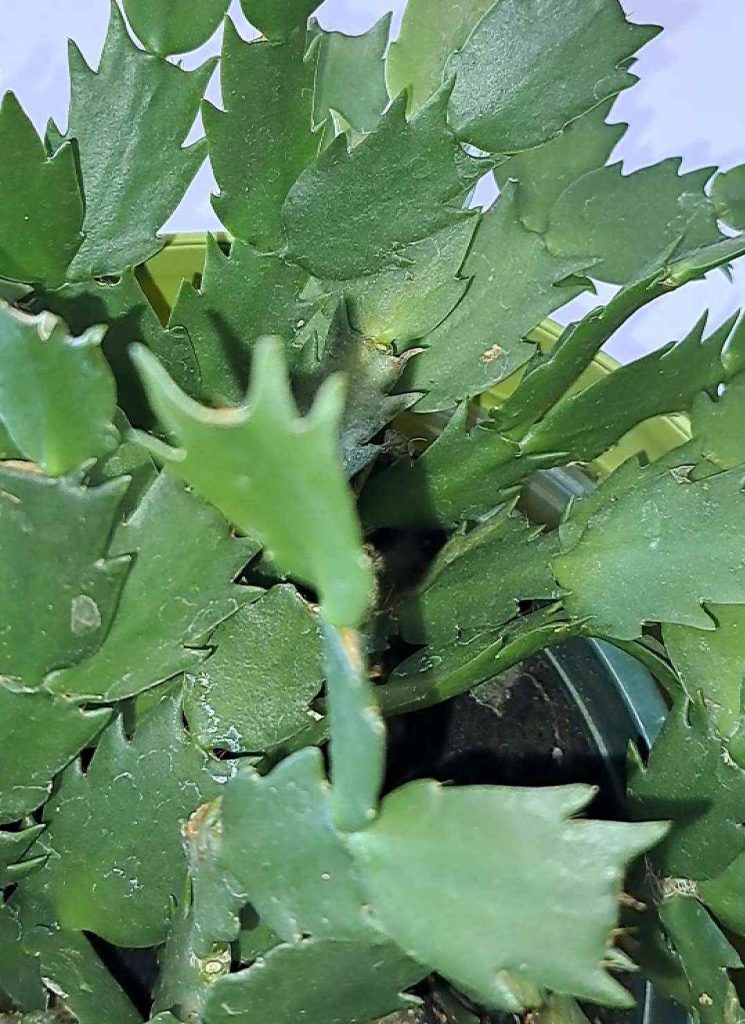By Janet Sellers
Holiday cactuses can live up to 50 years. They originally came from the Brazilian rainforests. I found some surprises about this non-toxic plant that’s safe for dogs and cats. Christmas cactus, Thanksgiving cactus, and Easter cactus are common names for this succulent plant.
The University of Georgia reports on its botanical extension website that the original Christmas cactus was developed by French botanist Charles Lemaire and named after French horticulture collector Frédéric Schlumberger. Schlumbergera is now the correct botanical name, but they are frequently called Zygocactus.
These plants stay in bloom for three to six weeks, each blossom lasting about a week. They have adapted to be pollinated by hummingbirds in the Brazilian rainforest. The 20-30 flower “tepals” fuse to form a floral tube for the hummingbirds to pollinate. The Christmas cactus flowers have pink pollen and later, a fleshy fruit.

I enjoy my Christmas cactus plants but was disappointed when they didn’t form buds this year. Alas, I think my plants will probably bloom for Valentine’s Day given the advice I found. About a couple of months before the desired bloom time, a very consistent 50 to 60-degree indoor temperature, 12 to 14 hours of darkness every 24 hours, is needed. As short-day plants they need cool temperatures (but not cold) to trigger flowering.
The plants are so sensitive that even a street light or a night light will affect them. We can simply cover them every night and then take the covering off the next morning, and do this for six weeks (and get them to bloom again in the year with this trick months after their first blooming). Increased darkness compensates for temperatures above 65 degrees. After buds appear it could take 6-8 weeks to actually bloom (especially for the second time) with no fertilization during flowering.
Christmas cactuses will drop flower buds with sudden changes in temperature, overwatering and low humidity, but go limp if they’re over-watered. Water every two weeks when soil is dry an inch down. They like being rootbound, needing repotting every couple of years. Prune them to a nice shape and keep the green stem segments to root and make new plants.
Janet Sellers is an avid “lazy gardener” letting Mother Nature lead the way for natural growing wisdom. Reach her at JanetSellers@OCN.me.
Other High Altitude Nature and Gardening articles
- High Altitude Nature and Gardens – Wild Horse Fire Brigade: successful fire mitigation since the beginning of…plants (7/31/2025)
- High Altitude Nature and Gardening (HANG) – Gardening with nature’s beautiful bouncers (7/3/2025)
- High Altitude Nature and Gardening (HANG) – Enjoying nature in summer, high altitude landscaping, and weed control (6/7/2025)
- High Altitude Nature and Gardening (HANG) – May: new trees from tree branches, plant partners, bee kind (5/3/2025)
- High Altitude Nature and Gardening (HANG) – Earth Day and the joys of gardening (4/5/2025)
- High Altitude Nature and Gardening (HANG) – Wild outdoors: pine needle bread, gardening in March (3/1/2025)
- High Altitude Nature and Gardening (HANG) – Fermented February, cocoa mulch, and a chocolate “workout” (2/1/2025)
- High Altitude Nature and Gardening (HANG) – January is a seed starter month (1/4/2025)
- High Altitude Nature and Gardening (HANG) – Winter, our backyards, and forests (12/5/2024)
- High Altitude Nature and Gardening (HANG) – Let’s protect our forests, soil, and gardens (11/2/2024)
